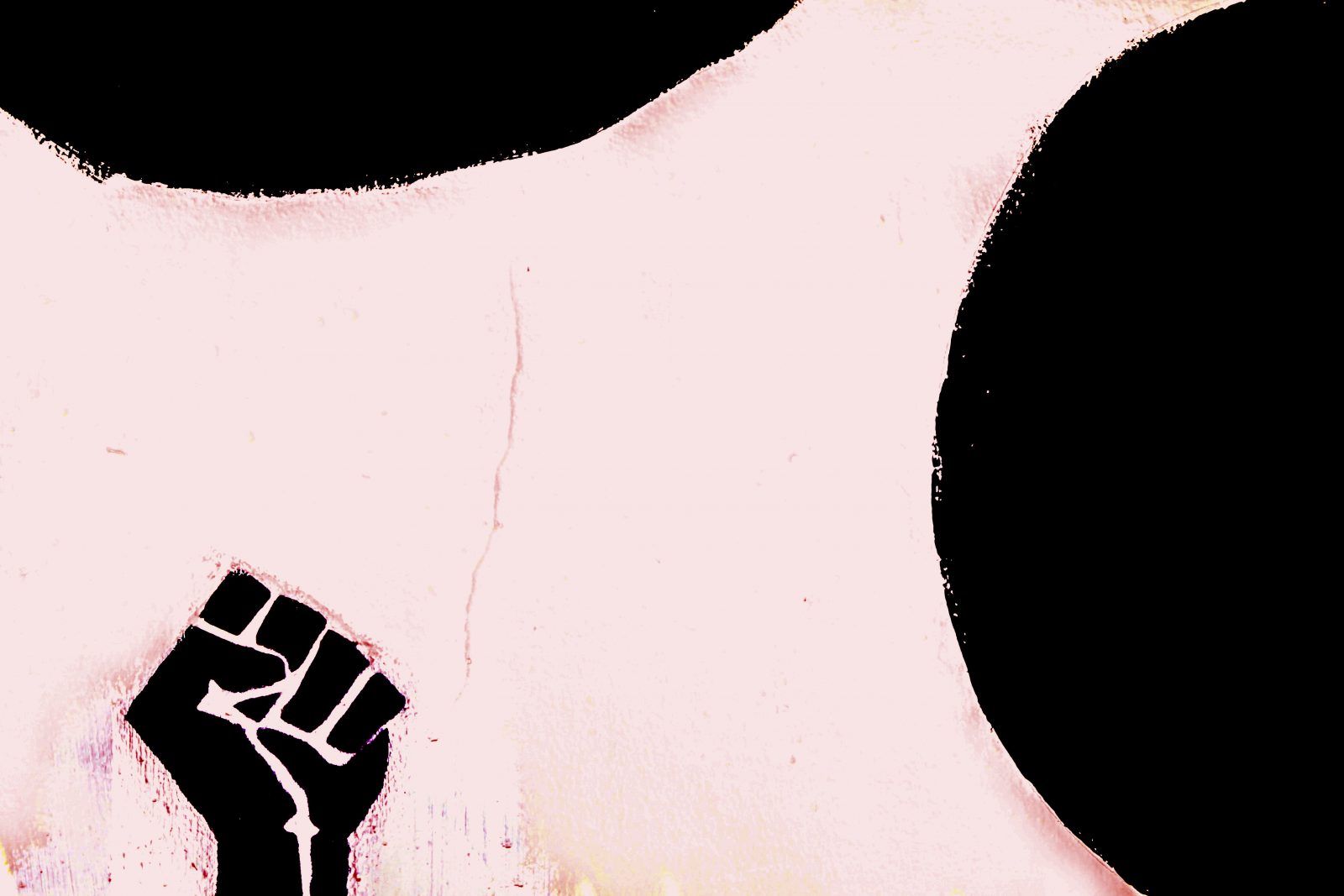Black people are incarcerated at a grossly disproportionate rate today. Conscious of this, many scholars, documentarians, and civil rights activists draw a direct line of descent between the convict lease, chain gang, and criminal surety systems of the post–Civil War South and mass incarceration. Key to this origin story is the idea that the Thirteenth Amendment, ratified in 1865, serves as the legal foundation of today’s penal system. That amendment made the abolition of slavery and involuntary servitude the law of the land—except for those convicted of crimes. It implicitly authorized former slaveholders to create a penal system that could re-enslave freed people as punishment for any number of newly concocted crimes. As the story goes, the same amendment that fostered “slavery by another name” still grants counties, states, and the federal government the right to strip convicted offenders of their freedoms and put them to forced labor.
Like all powerful origin stories, this one is both morally resonant and analytically insightful: In certain key respects, today’s carceral state operates much as the South’s convict lease camps and chain gangs operated—that is, as variants of slavery (if not of the chattel variety) and as constitutionally sanctioned instruments of racist social control. In neither era are prisoners meaningfully compensated for their work; in neither is the work voluntary. Just as the convict lease and chain gang systems were part of a larger apparatus of power that expropriated and subjugated Black people in enormous disproportion to white people, our carceral state operates within an expansive web of racist disempowerment. And both systems teach incarcerated and free Black people a chilling lesson about their precarious place in the social order.
As insightful, morally clarifying, and politically useful as this narrative may be, it illuminates some truths while obscuring others. It overlooks some of the other deeply buried roots of our system of mass incarceration and forced labor, while also neglecting more recent political-economic forces that, as Ruth Wilson Gilmore and others have shown, reshaped and exponentially expanded our own carceral state. Although the Thirteenth Amendment underwrote the drive to push convicted freed people back into bondage and hard labor, it also constitutionalized a brutal system of penal involuntary servitude that had been operating in the United States for more than four decades before the Civil War. Indeed, the amendment was as much a capstone as a foundation.

From the series
CAPTIVE LABOR
A collection of essays at the intersection of labor and the carceral state, in partnership with LPE Blog.
In what follows I offer a supplement to the dominant historical narrative of the southern origins of forced prison labor (and mass incarceration) while bringing questions of class, wage-labor capitalism, and the shifting relationship between expropriation and exploitation to bear on our understanding of the current carceral regime.
The history of forced penal servitude in North America long precedes the Civil War. A version of the Thirteenth Amendment appeared in the Northwest Ordinance of 1787. That ordinance banned slavery and involuntary servitude in the Northwest Territory (an area encompassing most of the present-day Midwest). However, it made an exception for penal servitude and slavery—probably in an effort to protect the masters of the last few of the 55,000 penal transports sent to British North America and auctioned into penal servitude for periods of between seven and fourteen years.
The penal labor and penitentiary experiments of the Early Republic mostly failed, due largely to the states’ inability to overcome the collective resistance of incarcerated people and the citizenry’s general suspicion of strong states (which they associated with Old World aristocracies). But in the 1820s, following a series of large-scale penitentiary uprisings and the nation’s first major recession, many state legislatures enacted tough new laws; built new, fortress-like prisons; and mandated forced labor for prisoners. States also authorized guards to whip or otherwise physically discipline prisoners and stripped prisoners of their political, civil, and customary rights. The great majority of these incarcerated men lived and toiled in northern states, not southern ones.
By 1865 in California, Illinois, Massachusetts, New York, and almost every other non-southern state, tens of thousands of men routinely endured not only forced penal labor but a fully elaborated system of penal servitude—that is, a system in which almost all the prisoner’s legal and de facto liberties were suspended (which had not been the case in the Early Republican penal system). Penal servitude was so deeply entrenched and widespread that, without the exemption clause, the Thirteenth Amendment’s universal prohibition on slavery and involuntary servitude would have rendered most state prisons unconstitutional. The amendment’s exception clause, then, was a circuit through which an older, almost exclusively northern, history of penal servitude flowed and was authorized—past, present, and future.
In the abstract, the penal servitude recognized by the Thirteenth Amendment could have taken any form. In the antebellum North, however, it almost always took the form of a labor contract under which the state sold the labor power of convicts to private parties. These contractors, most of whom set up machinery within prison walls and put prisoners to forced industrial labor, extracted enormous wealth from the enterprise. Meanwhile, the states, left with the costs of feeding, sheltering, and guarding prisoners, barely broke even.
Thus, decades before ex-slaveholders enacted the Black Codes and instituted the criminal surety system (often cited in scholarly and activist literature as an origin point for our carceral labor system), northern states had stripped convicted offenders of almost all their rights and sold their labor power to private interests. Many, including New York, authorized or turned a blind eye to brutal corporal punishments that had been neither politically acceptable nor legally permissible in the Early Republic. At least one northern state (Illinois) leased the entire prison population (not just their labor power), body and soul, to a single contractor (Samuel A. Buckmaster) for a period of twenty years. Southern states built only small prisons before the Civil War, and at least two rejected the institution outright.
The overwhelming majority of the tens of thousands of people subjected to contractual penal servitude each year were either young, poor, native-born northern men or else poor immigrant men from Ireland, Germany, England, Scotland, or Western Europe. Immigrants made up anywhere from a quarter to half of all northern prisoners. The vast majority were white. Black men were, from the beginning, incarcerated in the North at a disproportionate rate, but they constituted such a small portion of the general population as to account for only a small minority of incarcerated people.
The preponderance of white men in antebellum prisons should not lead us to assume that their overseers—or, for that matter, judges and lawmakers—treated them benignly. They did not. Northern prisons were brutal institutions in which it was legal for guards to maim and, under certain conditions, kill. Horrific corporal punishments and sensory deprivation in isolation cells were combined to devastating effect. Criminal disfranchisement followed ex-prisoners out of the prison gates, and burgeoning working men’s organizations refused them entry to the trades (on the grounds that the supposed taint of criminal conviction would demoralize and devaluate the trade). “Keepers” such as Sing Sing’s warden Elam Lynds (whom Alexis de Tocqueville and Gustave de Beaumont interviewed as part of their 1831 study of U.S. penal systems) very probably doled out harsher treatment to non-Anglo and Catholic prisoners. But for most of the imprisoned poor, life was nasty, brutish, and, as far as the records indicate, probably much shorter than would have otherwise been the case.
Imprisoned men were very much part of the North’s political economy, producing millions of dollars of goods that were sold on the open market; the very small number of imprisoned women, though subjugated, were mostly not put to contract labor. Moreover, contractual penal servitude existed within—and reinforced an expanding and parallel universe of—laws and institutions that exerted considerable force on working people and labor markets.
Although many critics today associate vagrancy laws and strict labor contract laws favoring employers with the post–Civil War South, such laws predate the South’s adoption, and were commonly wielded as weapons of labor control in the antebellum North as well. They had originated, together with enclosure laws, poor houses, and houses of correction, in sixteenth-century England as a means of pressuring a wandering, masterless, dispossessed mass of peasants to enter waged labor. In the industrializing antebellum North, as larger scale factories and waged labor slowly but surely supplanted the bonds of the artisanal, master–servant relationship, and as journeymen organized and struck tools in protest, cities and states tightened vagrancy laws, stiffened and enforced anti-riot laws, and established uniformed police departments. If there is an observable historical pattern here, it is that being mobile, poor, and underemployed was, to lesser or greater degree, subject to criminalization and control—whether in early modern Britain, the antebellum North, or the post-Reconstruction South.
These patterns of control were supercharged in the South once the Democratic Party overthrew Reconstruction’s Republican—and racially inclusive—state governments. (The radical democracy of Reconstruction is often overlooked in the conventional origin story, possibly because it disrupts the supposedly direct line of descent between the Thirteenth Amendment and the racist convict lease system.) “Redeemer” Democrats immediately overturned the Reconstruction governments’ penal and police reforms, which had included desegregating the Texas Rangers and the New Orleans police department and providing for prisoner rehabilitation programs in North Carolina. Beginning with Mississippi in 1876 and soon expanding to other states, Redeemers enacted laws that turned petty property crimes into imprisonable felonies, tightened vagrancy and debt laws, and scaled up the convict leasing system. The Thirteenth Amendment, together with the Virginia Supreme Court’s ruling in Ruffin v. Commonwealth (1871), surely gave lawmakers explicit permission, but the penal labor systems that the amendment emboldened were far from novel. If anything, the South was falling into line with the rest of the country—albeit in ways that intensified and racialized penal violence.
By the mid-1880s, whether toiling on a plantation in Texas or a coal mine in Tennessee, a twine-making workshop in Minnesota or an oven factory in New York, prisoners were driven and disciplined by private interests whose pursuit of profit was practically unconstrained. The rates at which convict laborers died or suffered grievous bodily harm were highest in the South, especially among Black prisoners, who suffered the brunt of the mortality rates (as high as 40 percent per year in some of the harshest lease camps). In other parts of the country, rates of serious injury or death due to an overseer’s act of violence, industrial accident, or the slower, insidious violence of endless toil were significantly lower, but also higher than among free workers. Neither the prison authorities nor the courts gave prisoners protection from negligent or brutally exploitative contractors. Many contractors were extremely successful exploiters: A federal labor study found that U.S. prisoners made goods or performed work equal to almost $29 million between 1885 and 1886 (about $46 billion today). A full 85 percent of that value was produced outside the South.
Finally, there is another twist in the tangled nineteenth-century roots of our current penal labor system. The kind of work that prison laborers are forced to perform today (mostly institutional maintenance and/or work for the state), and the constraints under which states and the federal government are compelled to operate, originate less with either the northern or southern contract prison labor systems than with the countrywide movements to abolish those systems in the late nineteenth century. Beginning in the 1880s, waged workers and labor organizers, who objected to competing with cheap convict labor, and manufacturers who found it hard to compete against prison contractors in the same line of business, successfully forced state after state to abolish contract prison labor. By 1910 most states had prohibited or ceased both the hiring out of prison workers to private interests and the sale of prison-made goods on the “open” market. New Deal legislation then effectively closed the remaining interstate trade in prison-made goods. Abolition of contracting, the foundation of the nineteenth-century penal system, threw most state prisons into crisis. After several false starts in the early twentieth century, administrators cobbled together a system that, much like our own, forced prisoners to work, though almost always for the institution or state, in a service capacity, and in such a way that would not compete directly with organized labor.
This is not to argue that today’s system of mass incarceration is somehow separate from or unrelated to labor and labor markets beyond prison walls. Prisons and the larger criminal justice system still exist within a constellation of laws and institutions that exerts considerable force on “free” laboring people and labor markets. Indeed, given the massive size of our carceral state—and its effective criminalization of a much larger proportion of the population than in either of the preceding centuries—it seems probable that mass incarceration is playing a major role of some sort in shaping labor markets. It is, moreover, assuredly being driven and shaped by the neoliberal policies and the drive for automation that have so drastically altered social relations and the conditions of life in the United States and around the world in recent decades. As the southern origin story holds, forced penal labor has a long history as a critical tool of racist expropriation and exploitation. But, for at least as long, it has also been the effect and instrument of a crisis-ridden “free labor” society that paradoxically creates, needs, fears, and, in some times and places, racializes “masterless” people. Neither account is sufficient on its own. Combining them promises to illuminate both our current carceral regime and the structures of the racializing capitalism that it serves—and by which it is served.
Image: BP Miller/Unsplash/Inquest

